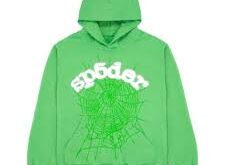Related Articles
The Rise of Eric Emanuel: A New Era of Sportswear Luxury
Eric Emanuel, a New York-based ee shorts designer, rose to prominence by blending the worlds of sportswear and high fashion. His focus on mesh basketball shorts — something previously relegated to gym lockers and athletic courts — turned them into high-end, must-have items in the world of streetwear. Emanuel’s shorts are defined by their vibrant colors, bold logos, and a high level of craftsmanship. Unlike traditional basketball shorts, which were often seen as functional yet basic, Emanuel elevated this humble garment into a statement piece.
Eric Emanuel shorts are a representation of luxury sportswear. They combine comfort and functionality with design elements that scream exclusivity. The shorts often feature intricate detailing, from embroidered logos to premium fabrics, making them stand out as a symbol of high-quality streetwear. This blend of athletics and luxury is a key feature of modern streetwear, where casual sports pieces are infused with a high-fashion sensibility, allowing wearers to move seamlessly from the basketball court to social settings.
Emanuel’s designs reflect a broader trend in streetwear: the adoption of traditionally athletic or utilitarian clothing into mainstream, fashionable contexts. His shorts exemplify this transformation by maintaining a functional aesthetic while simultaneously aligning with the luxury and exclusivity sought by today’s streetwear consumers.
Stussy: The Godfather of Streetwear
If Eric Emanuel represents the cutting edge of sportswear luxury, stussyofficials.us stands as one of the founding fathers of streetwear culture. Established in the early 1980s by Shawn Stussy, the brand began as a small surfboard business and quickly morphed into one of the most influential streetwear labels in the world. Stussy’s approach to streetwear was organic and grassroots, long before the concept became commercialized.
Stussy’s designs have always been centered around blending various subcultures — from punk and hip-hop to skateboarding and surfing. The iconic Stussy logo became a symbol of authenticity within these countercultures, helping the brand gain a cult following. It’s no exaggeration to say that Stussy helped lay the foundation for what we now understand as streetwear: a blend of casual, comfortable clothing infused with bold graphics, cultural references, and a rebellious spirit.
Stussy’s influence is seen in its ability to adapt to changing times while maintaining its core identity. Whether it’s collaborating with high-end fashion houses like Dior or Nike or staying connected to its skate and surf roots, Stussy remains a versatile brand that defines what it means to be timeless in streetwear. The brand’s success lies in its capacity to evolve without losing the elements that made it iconic — a balance that continues to define modern streetwear.
The Intersection of Sportswear and Streetwear
One of the most compelling aspects of modern streetwear is how it blurs the line between athletic wear and casual, everyday fashion. Eric Emanuel’s shorts are a perfect example of this crossover. By taking a piece of clothing typically associated with athletics and turning it into a luxury fashion item, Emanuel has contributed to the broader trend of sportswear’s integration into streetwear.
Stussy, on the other hand, has long been a pioneer in incorporating athletic and surf-inspired elements into street fashion. The brand’s use of oversized silhouettes, bold colors, and practical designs are hallmarks of this merging of genres. The intersection of sportswear and streetwear is now a defining characteristic of the industry, and brands like Eric Emanuel and Stussy are at the forefront of this movement.
Consumers today are looking for clothing that is not only stylish but also comfortable and functional. This is where sportswear and streetwear meet. Both Emanuel and Stussy have capitalized on this demand by producing clothing that transcends traditional fashion categories. Whether it’s a pair of mesh shorts or an oversized hoodie, these pieces are designed to be worn in a variety of settings, from casual hangouts to more fashionable outings.
Streetwear as a Cultural Phenomenon
While Eric Emanuel and Stussy may represent different eras of streetwear, they both tap into the broader cultural significance of this fashion movement. Streetwear is more than just a style of clothing — it’s a cultural phenomenon. It represents the merging of music, art, fashion, and social commentary. From hip-hop artists to skateboarders, streetwear has been adopted by a wide array of subcultures, each adding their own unique flavor to the mix.
Both Eric Emanuel and Stussy have leveraged these cultural ties to enhance their brand identity. Emanuel’s shorts are often seen on the biggest names in hip-hop, while Stussy has long been a favorite among musicians, skaters, and artists. This connection to culture gives both brands an authenticity that resonates with their audiences. Streetwear, by its very nature, thrives on authenticity, and both Emanuel and Stussy have managed to maintain that in an increasingly commercialized world.
Collaborations: Expanding the Boundaries of Streetwear
One of the hallmarks of modern streetwear is the emphasis on collaborations. Eric Emanuel and Stussy have both embraced this trend, partnering with a variety of brands and designers to create unique, limited-edition pieces. These collaborations allow both brands to expand their influence beyond their core audiences, reaching new demographics and markets.
For example, Eric Emanuel has collaborated with major sports brands like Adidas, bringing his unique aesthetic to a broader audience. These partnerships help to further elevate his brand, placing him at the intersection of high fashion and streetwear. Similarly, Stussy has worked with luxury fashion houses like Dior, proving that streetwear can exist in the same space as high-end fashion.
Collaborations like these help to redefine what streetwear can be. No longer confined to its roots in counterculture, streetwear has become a global fashion movement that transcends class, geography, and gender. Eric Emanuel and Stussy have both played a role in this transformation, showing that streetwear is as much about collaboration and innovation as it is about staying true to its roots.
Sustainability and Ethical Fashion in Streetwear
As the fashion industry grapples with issues of sustainability and ethical production, streetwear brands like Eric Emanuel and Stussy are beginning to address these concerns. Emanuel’s shorts, for example, are often produced in limited quantities, which not only adds to their exclusivity but also reduces overproduction. This model aligns with the growing consumer demand for more sustainable fashion choices.
Stussy, with its long-standing presence in the industry, has also begun to incorporate more sustainable practices into its production. The brand has been exploring eco-friendly materials and ethical manufacturing processes, reflecting a broader shift in the streetwear industry towards more responsible production.
As consumers become more conscious of the environmental impact of their clothing, streetwear brands are finding ways to stay relevant while also addressing these concerns. Both Eric Emanuel and Stussy are examples of how modern streetwear can evolve to meet the demands of a more sustainability-focused future.
Conclusion: Defining Modern Streetwear Through Legacy and Innovation
Eric Emanuel and Stussy define modern streetwear in their own unique ways. Emanuel, with his focus on luxury sportswear, represents the new wave of streetwear that blends comfort, functionality, and exclusivity. Stussy, on the other hand, stands as a symbol of streetwear’s roots in counterculture, while continuing to evolve and adapt to the modern fashion landscape.
Together, these brands represent the past, present, and future of streetwear. They embody the movement’s core principles of authenticity, cultural relevance, and innovation, while also pushing the boundaries of what streetwear can be. Whether through collaborations, sustainability efforts, or simply staying true to their unique aesthetics, Eric Emanuel and Stussy innovation to shape the definition of modern streetwear, ensuring its place at the forefront of fashion for years to come.



